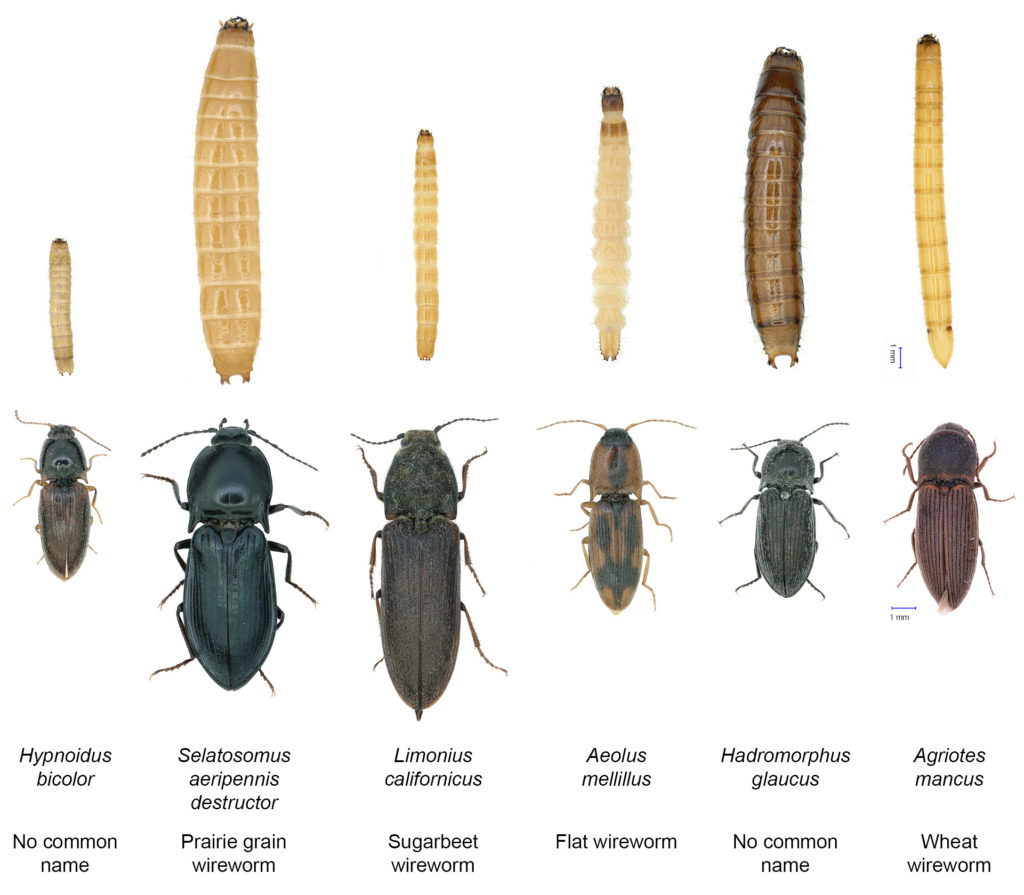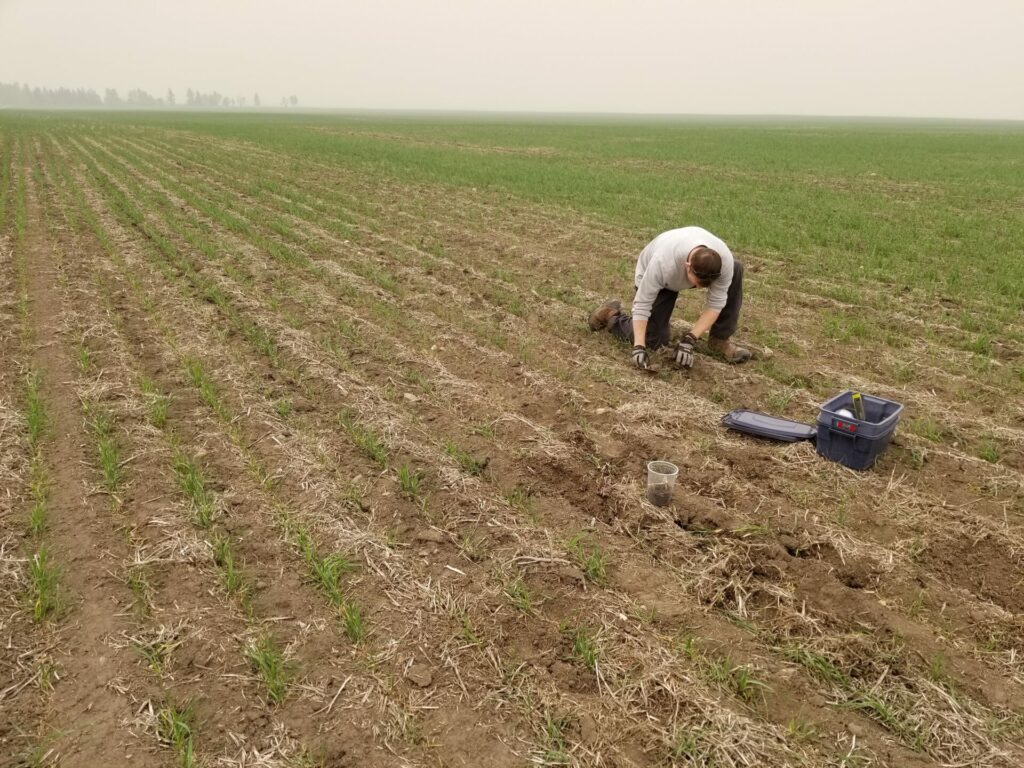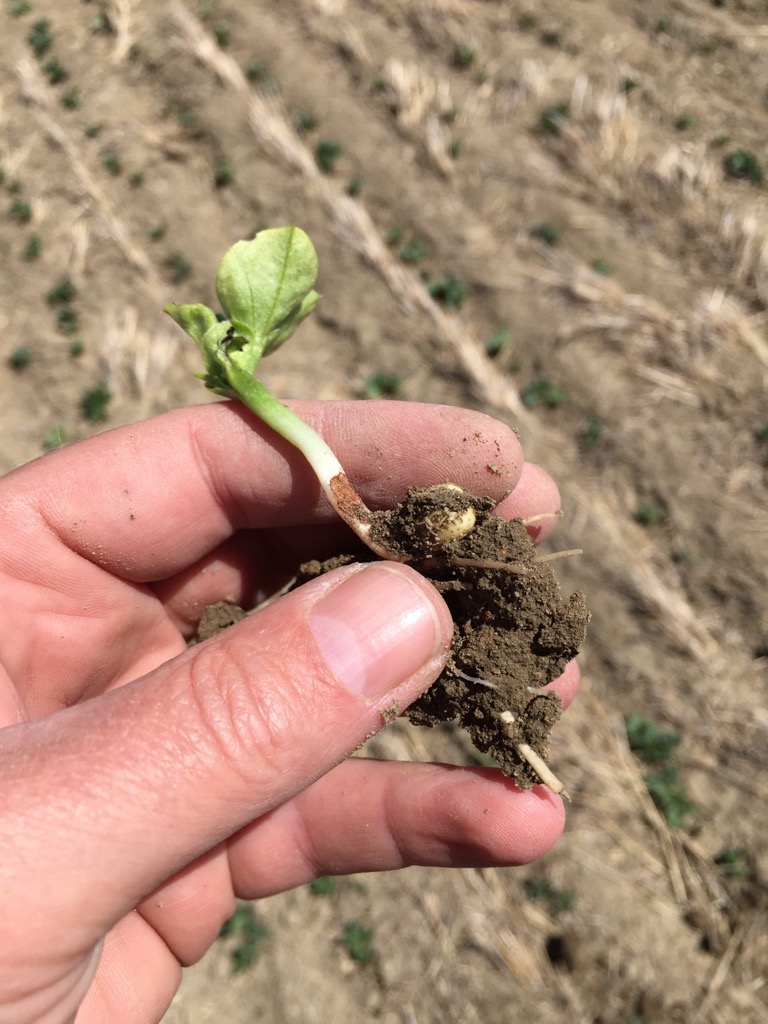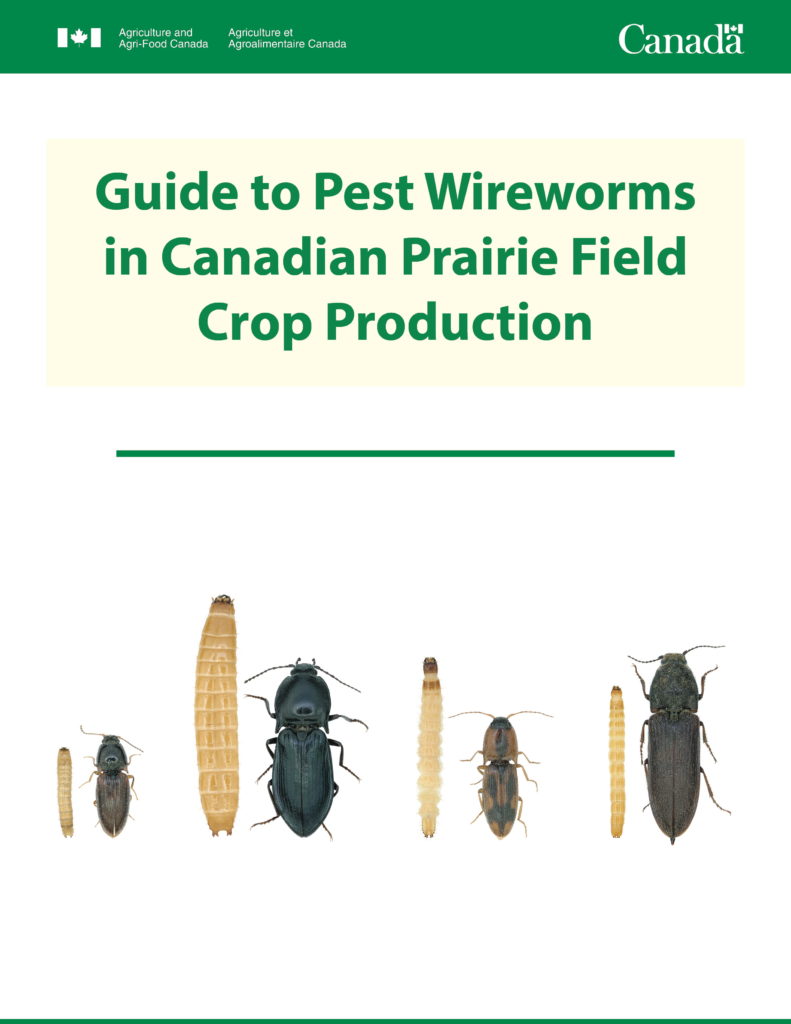Reminder – Wireworms are the larval stage of click beetles from the family Elateridae. Click beetles, the adult stage, do not cause damage to crops. Wireworms live in the soil, where it can take 4 or more years to complete larval development. In the soil, wireworms feed on germinating seeds and the roots of a wide variety of prairie field crops including cereals, pulses, oilseeds, and vegetables including potato and carrots. Damage to root vegetables can result in unmarketable produce.
Several species of wireworms can be found on the Canadian Prairies but species commonly occurring in field crops are included in Figure 1. Even more importantly, there are four primary pest species, including Hypnoidus bicolor, prairie grain wireworm (Selatosomus aeripennis destructor), sugarbeet wireworm (Limonius californicus), and flat wireworm (Aeolus mellillus).

Similar to cutworms, bare patches in a field can be an early and obvious sign of wireworm infestation in the spring. Patchy crop emergence (Fig. 2), results when wireworms consume germinating seeds or feed on the roots and stems of young seedlings (Fig. 3).


More information about the primary wireworm pest species can be found in the Guide to Pest Wireworms in Canadian Prairie Field Crop Production (also available in French).

